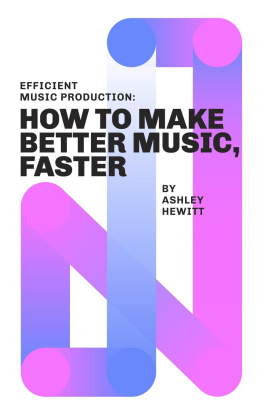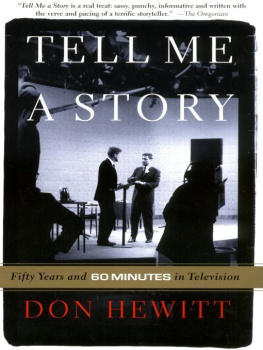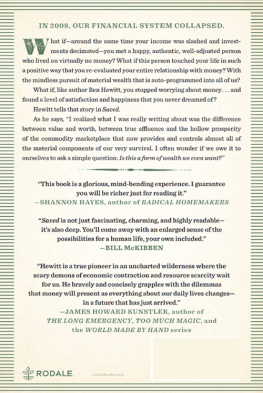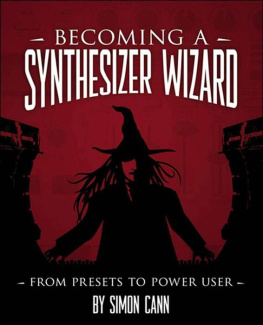Ashley Hewitt - How To Program Any Synthesizer
Here you can read online Ashley Hewitt - How To Program Any Synthesizer full text of the book (entire story) in english for free. Download pdf and epub, get meaning, cover and reviews about this ebook. year: 2018, publisher: Stereo Output, genre: Children. Description of the work, (preface) as well as reviews are available. Best literature library LitArk.com created for fans of good reading and offers a wide selection of genres:
Romance novel
Science fiction
Adventure
Detective
Science
History
Home and family
Prose
Art
Politics
Computer
Non-fiction
Religion
Business
Children
Humor
Choose a favorite category and find really read worthwhile books. Enjoy immersion in the world of imagination, feel the emotions of the characters or learn something new for yourself, make an fascinating discovery.

- Book:How To Program Any Synthesizer
- Author:
- Publisher:Stereo Output
- Genre:
- Year:2018
- Rating:5 / 5
- Favourites:Add to favourites
- Your mark:
- 100
- 1
- 2
- 3
- 4
- 5
How To Program Any Synthesizer: summary, description and annotation
We offer to read an annotation, description, summary or preface (depends on what the author of the book "How To Program Any Synthesizer" wrote himself). If you haven't found the necessary information about the book — write in the comments, we will try to find it.
How To Program Any Synthesizer — read online for free the complete book (whole text) full work
Below is the text of the book, divided by pages. System saving the place of the last page read, allows you to conveniently read the book "How To Program Any Synthesizer" online for free, without having to search again every time where you left off. Put a bookmark, and you can go to the page where you finished reading at any time.
Font size:
Interval:
Bookmark:
Published by Stereo Output Limited, company number 11174059
ISBN number 978-1-9996003-0-3
Copyright Ashley Hewitt 2018
Ashley Hewitt has asserted his right under the Copyright, Designs and Patents Act 1988 to be identified as the author of this work.
All rights reserved. No part of this publication may be reproduced, stored in a retrieval system, or transmitted in any form or by any means, electronic, mechanical, photocopying, recording or otherwise, without the prior permission of the copyright holder except in the case of brief quotations embodied in critical views and certain other non-commercial uses permitted by copyright law.
Thank you to Rej at Single Cell Software for the permission to profile Caustic so extensively.
Please go to www.stereooutput.com to contact us or follow us on various social media channels.
Dedicated to Michael Hewitt, Juliet Dover and Natalie Krisman thank you for your ongoing inspiration and support.
Preface
Chapter 1 What is sound?
Chapter 2 Active listening
Chapter 3 What is synthesis?
Chapter 4 Getting started
Chapter 5 An Introduction to Caustic
Chapter 6 Single Oscillators
Chapter 7 Oscillator mixing & manipulation
Chapter 8 Filters
Chapter 9 Envelopes
Chapter 10 Filter Envelopes
Chapter 11 LFOs
Chapter 12 Polyphony
Chapter 13 Effects
Chapter 14 - Delay Effects
Chapter 15 - Modulation Effects
Chapter 16 - Parametric Equalization
Chapter 17 - Compression
Chapter 18- Creating a Bass
Chapter 19 - Creating a Pad
Chapter 20 - Creating a Lead
Chapter 21 - Creating Chords
Chapter 22 Recreating Sounds
Chapter 23 Drum synthesis
Chapter 24 Routing matrices
Chapter 25 Other synthesizers
Chapter 26 Character
Chapter 27 - Experimenting with other synthesizers
Chapter 28 - Concluding thoughts
Appendix A Q&A Exercise answers
Appendix B Areas and functions of Caustic
Index
Preface
This book was conceived as a consequence of a long time spent struggling with synthesizers, be it hardware or software. Most producers want to stop using presets and fashion their own palette of sounds, but find that even if they create a beautiful sound by accident, the subsequent recreation of that sound is out of reach.
I believe that this is due to an unstructured knowledge of how synthesizers work. This book was written to give you the ability to adapt to and work with any synthesizer that you happen across, freeing you to make the beautiful music that you've always wanted to create.
In the same way that there are different cars, there are different synthesizers, all of which work slightly differently. They all, however, possess the same underlying structure. If you have the correct mental toolkit, you will quickly be able to adapt to any new synthesizer you come across. This book will provide you with that mental toolkit.
A common criticism of synthesizer teaching resources is that they only provide information as to how to work one specific model of synth, and not whichever synthesizer the user possesses.
Unfortunately, its not possible to account for all models of synthesizer in one book. Its also very easy, when struggling to understand synthesis, to flit from synthesizer to synthesizer, only understanding its most basic functions, never getting to know a synthesizer in depth.
Therefore, this books lessons are entirely based on one synthesizer Caustics SubSynth. The reason Ive chosen SubSynth is that its a simple, basic subtractiv e synthesizer (i.e. you pick a waveform or two, and then shape it afterwards). It does everything reasonably well, with no bells and whistles, and is therefore a perfect synthesizer to learn with.
It is available on a music-making platform called Caustic, which is cheap and available for virtually any computing platform you own. As of writing, its available on Android and iOS through their respective App stores, and available on, PC and Mac at http://www.singlecellsoftware.com/caustic . I strongly suggest you acquire it before you begin the exercises in this book.
If you truly cant get hold of Caustic, other simple computer-based synthesizers that would enable to you to follow the instructions in this book include:
Reason's Subtractor synth
Logic Pro X's Retro Synth (use the analog mode)
Ableton's Analog
Blaukraut Engineering's free Charlatan synth (Windows only)
TAL's free Elek7ro
However, if you are not using Caustic, transferring the knowledge from the synthesizer in this book to whatever synthesizer you're using may be difficult. Embrace that difficulty as part of the fun. This book is all about getting hands-on with whatever gear you're using and working things out for yourself, applying the knowledge gleaned from this book. At the same time, don't expect it to be too difficult! Synthesizers have not changed drastically in the decades since they've been invented, and this is testament to their intuitive design.
Feeling uncomfortable transferring ones knowledge from one synthesizer to another, in my eyes, is merely a product of lacking structured knowledge. All synthesizers use a very similar design, and have done so for decades and transferring your knowledge from one synthesizer to another is easy if you understand the functions of all the different parts of the synthesizer and how they fit together. This book will furnish you with this knowledge.
I make no assumptions as to your level of knowledge as a reader, so if you have a background in music technology, you may already know some (or even lots) of the theory referred to in the book. If that is the case, then theres no harm in confirming what you already know! Id much rather an experienced music technologist be forced to skim some of the simpler parts of this book than have someone with little experience be forced to fill in knowledge gaps outside of this book.
Before we start, its worth explaining the nomenclature of this book. There are two main controls that well be using in Caustics SubSynth - and these types of control happen to be prevalent in many electronic devices.
The sound experiments in this book will explore the full spectrum of sounds that subtractive synthesizers have to offer, so a better audio setup will give you better results. Even a decent pair of headphones plugged into your device will work just don't rely on phone speakers!
Pots are circular controls such as this one:

I refer to the position of the indicator on the pot by the time it shows if it was on a clock. For example, the pot above would be at midday. The pot below would be at 3 oclock:

In addition to pots, there are sliders. This is a slider:

I tend to refer to sliders as to their location - Id refer to the above slider as being halfway up.
In addition to learning the nomenclature of all the different parts of a synthesizer, you will also be set exercises at the end of most chapters. These will either be in the form of practice or a Q&A. The answers to the Q&A are in Appendix A. If youre using an electronic version of the book, there will be a link to Appendix A at the end of each chapter and a link back to the chapter within the answers.
Hopefully by now, youve installed Caustic on whatever device you intend to be using, and youre sat with baited breath, ready to program some beauty into your synthesizer. Let's dive in but not before we have learned some theory.
Next pageFont size:
Interval:
Bookmark:
Similar books «How To Program Any Synthesizer»
Look at similar books to How To Program Any Synthesizer. We have selected literature similar in name and meaning in the hope of providing readers with more options to find new, interesting, not yet read works.
Discussion, reviews of the book How To Program Any Synthesizer and just readers' own opinions. Leave your comments, write what you think about the work, its meaning or the main characters. Specify what exactly you liked and what you didn't like, and why you think so.











